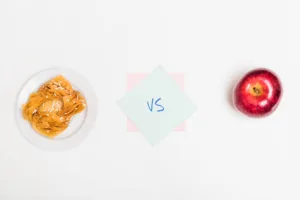Your body turns food fats into energy while maintaining your health through a process. The construction of biological structures happens through monomers, which function similarly to the way bricks build foundations for houses. Lipids, commonly known as fats, are among these structures, and their monomers—fatty acids and glycerol—are the essential “bricks.”
Lipids represent more than dietary caloric content. These structures serve three main functions, which include energy storage, and they create cell membranes while facilitating cellular intercommunication. The varied nature of these molecules makes it impossible for your body to perform its essential functions. The small size of these molecules does not explain their ability to execute big work.
Various lipid types exist because their monomer components, fatty acids and glycerol, enable adaptability. The two types of monomers unite as dynamic elements to deliver storage capabilities and structural support. The following discussion will examine the structure as well as the operational mechanics of these substances. This essay will discuss the process through which these compounds convert into life-sustaining lipids.
What are Lipids

Lipids form a wide category of natural substances that contain three main forms, including fats and oils together with waxes. Lipids stand out because they have a water-resistant quality, which leads to limited mixing behavior with water molecules. A unique characteristic of lipids helps them perform essential biological functions, which include creating protective barriers together with providing reliable energy storage.
Functions of Lipids
- Energy Reservoirs: The human body stores the greatest energy density in lipids because their energy content exceeds carbohydrate energy by a factor of two at the gram level.
- Cell Membrane Formation: The protective barrier around cells comes from phospholipids, which belong to the lipid chemical group. Phospholipids act as structural elements while functioning to control substance flow within and outside the cell.
- Biological Signals: Steroids work as chemical messengers to facilitate bodily communication throughout the body.
Types of Lipids
- Triglycerides: These dietary fats consist of one glycerol molecule combined with three fatty acids, according to our usual understanding.
- Phospholipids: The fundamental components of cell membranes contain a unique dual characteristic because one end seeks water molecules, yet the other end repels them.
- Steroids: Both cholesterol and hormones including testosterone operate within this category to serve structural needs and signaling functions.
Real-world analogy: Imagine lipids as a multi-tool pocketknife. A single tool can perform various tasks similarly to how lipids adapt to the multiple requirements of the human body. Lipids act as the source of energy throughout marathon events. The body benefits from lipids by providing insulation during cold weather.
In the next section, we’ll zoom in on the “multi-tool components” themselves: fatty acids and glycerol.
| Feature | Saturated Fatty Acids | Unsaturated Fatty Acids |
|---|---|---|
| Structure | No double bonds between carbon atoms; completely “saturated” with hydrogen atoms | One or more double bonds between carbon atoms; “unsaturated” with hydrogen |
| State at Room Temperature | Solid (e.g., butter, lard) | Liquid (e.g., olive oil, canola oil) |
| Health Impact | may increase LDL cholesterol levels, which may increase the risk of heart disease | It is generally considered heart-healthy; it may help lower LDL cholesterol levels |
| Examples | Animal fats, butter, coconut oil, palm oil | Olive oil, avocado oil, fish oil, nuts, seeds |
| Hydrogenation | Does not undergo hydrogenation, is already fully saturated | May undergo partial hydrogenation to form trans fats |
| Presence in Nature | Found mainly in animal products and some tropical oils | Found mainly in vegetable-based oils and fatty fish |
Breaking Down Lipids
Two basic components known as fatty acids and glycerol produce the complex compound known as lipids. The combination of monomers produces energy-storing and cell-structure-building molecules. The fuel supply comes from fatty acids, while glycerol acts as the rigid framework that keeps all components united.
What Are Monomers?
Lipids, along with other macromolecules, use monomers as their basic structural elements. The puzzle-making process involves monomers as individual pieces that complete a larger whole. The combination of glycerol and fatty acids forms triglycerides along with additional lipid structures. The lipid partnership functions both efficiently and biologically crucially for the body to perform tasks such as energy storage and insulation.
Fatty Acids

Fatty acids function as the primary elements that drive operations in the lipid domain. Structurally, they have long carbon-hydrogen chains that end with a -COOH functional group. The two main types of these chains exist today.
- Saturated Fatty Acids: The carbon bonds in saturated fats lack double bonds that would otherwise create bends, which results in straight and tightly packed arrangements. Butter displays solid characteristics at room temperature by nature of its saturated fat content.
- Unsaturated Fatty Acids: The double bonds present in these structures result in bending of the molecular framework. Their loose structure resembles the oil-based fats present in olive oil.
The human body needs fatty acids for energy generation. The body breaks chain structures into usable energy whenever it needs fuel. The caloric content of one gram of fat reaches 9 calories when compared to carbs or proteins at less than half that value.
Glycerol: The Backbone of Lipids
The three-carbon structure of glycerol contains three hydroxyl groups (-OH). Glycerol acts as a binding agent, which creates triglycerides from fatty acids. The structure operates as a central connection point that supports multiple spokes in a wheel configuration.
Glycerol functions as the anchor in a team-building exercise. Multiple fatty acids attach themselves to the glycerol core to create one stable energy storage unit. The body stores excess energy as triglycerides, which serve as its main long-term storage units.
Life depends on the essential bond that exists between fatty acids and glycerol. The basic structure enables the formation of complex lipids. The body uses these lipids to satisfy its energy requirements for activities such as cell repair and marathon running.
Working of Fatty Acids and Glycerol

Glycerol and fatty acids participate in esterification through hydroxyl groups of glycerol combining with carboxyl groups of fatty acids. The chemical reaction creates triglycerides which represent the most prevalent type of lipid compound. This process occurs naturally in our bodies, allowing us to store energy efficiently. These triglycerides not only store energy but also act as insulation, protecting our organs and maintaining body temperature. So, despite frequent discussions about eliminating fats from our diet, it is important to note that proper utilization of lipids is imperative to maintain optimal health.
Role of Lipid Monomers in Our Body
The combination of fatty acids and glycerol does more than just store energy. These lipid monomers are essential for many bodily functions. Here’s a quick list of why they’re so important:
- Energy storage: Lipids store more energy than carbohydrates, making them the ideal long-term energy source for our bodies.
- Cell membranes: Lipids establish the essential barrier of our cells, protecting them and deciding what enters and exits.
- Insulation and protection: Fatty tissue made of lipids insulates and protects vital organs.
- Hormone production: Some lipids are precursors that give rise to hormones, which regulate various body functions.
Fascinating Facts About Lipid Monomers
Lipid monomers exist as more than functional molecules because they present both stories and applications extending past human biological systems. This section presents a collection of notable information that illustrates both the adaptability and significant value of lipid monomers.
Historical Insight
Scientists extracted fats from diverse natural materials to start their fatty acid research during the nineteenth century. Discovery of glycerol first occurred during the soap-making process in the late 18th century. The scientific findings resulted in a better comprehension of monomers of lipids in biological processes.
Unique Perspective
Lipids perform extraordinary functions within the realm of animals. Whales maintain large quantities of lipids inside their blubber tissues. The insulation material protects them in frigid ocean conditions. The dense lipids serve both as an important power supply for extended travel and as insulation during migrations. Camels keep fat reserves inside their humps, which they turn into water and energy during their survival in dry territories.
Comparison of Lipid Monomers with Other Biomolecule Monomers
| Property | Lipid Monomers (Fatty Acids & Glycerol) | Protein Monomers (Amino Acids) | Carbohydrate Monomers (Monosaccharides) |
|---|---|---|---|
| Primary Function | Energy storage, structure | Enzymes, structural support | Immediate energy source |
| Energy Content (per g) | 9 kcal | 4 kcal | 4 kcal |
| Example | Triglycerides | Hemoglobin | Glucose |
Studying lipid monomers provides remarkable understanding about their adaptable and crucial characteristics. The biological functions of fatty acids and glycerol expand well beyond textbook descriptions since they both serve as energy stores and protect animal bodies against cold temperatures. The following segment explores prevalent misconceptions about lipids together with their unclear understanding in scientific terms.
Common Misconceptions About Lipids and Their Monomers
People have developed a negative perception about lipids and their building blocks because of incorrect information spread between communities. The following section addresses popular misconceptions about lipids and their monomers. This segment will present the reasons why lipids remain crucial to maintaining physical wellness along with mental equilibrium.
Myth: “All fats are bad for you.”
Dietary fats experienced years of negative publicity because many people linked these fats to weight gain and heart disease. Different kinds of fats exist with varying properties. The body recognizes harmful and beneficial fats based on their chemical makeup and their reaction patterns within the system.

Clarification: The consumption of saturated and trans fats present in processed foods will elevate your cholesterol numbers, which could trigger cardiovascular disease. Brain health critically depends on obtaining unsaturated fats from omega-3 and omega-6 fatty acids. They help in hormone production. These food compounds reduce inflammation in the body.
Example: Healthy fats found in avocados, nuts, and salmon fish serve as important components for promoting general health. You should avoid having burgers daily, but adding healthy fat foods to your diet will benefit your nutrition.
Misconception: “Fatty acids and glycerol are insignificant.”

People mistakenly think monomers cannot be important due to their small and basic nature. The truth is completely opposite of such assumptions. Glycerol, together with fatty acids, serves as the base for triglycerides and phospholipids that enable body functions while sustaining cellular structure.
Clarification: Fatty acids and glycerol serve as the mechanical components of a clock system. These minor compounds function individually but unite to operate complex systems that enable the smooth functioning of life processes.
List of Benefits of Fatty Acids:
- Support brain development and function.
- They serve as preexisting molecules which develop into hormone-like substances.
- Provide insulation and protect organs.
The study of these details shows how fats, together with their monomers, constitute essential biological components. Striking equilibrium through education allows you to appreciate beneficial fats while minimizing detrimental ones.
Importance of Monomers of Lipids
Lipids, together with their monomer units, find significant applications reaching well past the boundaries of biology education. Lipids and their building units show significant impact on society through various applications that span from dietary components to advanced scientific discoveries.
Nutrition
The explanation of fatty acids and glycerol operations will help us choose better food options. People can find essential fatty acids, omega-3, in fish oil while they exist in flaxseed. Heart health benefits along with disease prevention mark these substances as two essential components in the human diet. Glycerol serves as a hydration agent in sports nutrition to assist athletes by preserving their performance during intense physical activities.
Real-World Tip: Check food labels for “trans fats” and “partially hydrogenated oils.” Reading nutritional labels enables you to stay away from harmful fats. Strive to introduce omega-3 as well as monounsaturated fats into your diet.
Medicine
Drug delivery systems experienced a major advancement through the use of fatty acids together with glycerol. Research shows an increase in the use of lipid-based nanoparticles for medication transport to precise cells. The genetic content of mRNA COVID-19 vaccines travels through lipid nanoparticles, which ensure efficient delivery.
Interesting Fact: Medications benefit from Glycerol use as a solvent because it helps both stabilize and increase their effectiveness.
Environmental Science
Research indicates that monomers of lipids offer a viable solution for creating sustainable energy. Biodiesel, which is produced through the transformation of vegetable oil and algae, serves as a sustainable fuel choice in place of traditional fossil fuel products. Biofuels originate from lipid transesterification, which results in fuel that propels vehicles and produces emissions with lower carbon content.
Example: The production of biofuel using algae-based lipids has become increasingly popular. Algae grows rapidly because of its high oil content. The fast growth rate combined with high oil content of algae makes this technology a sustainable energy source for future demands.
Multiple studies demonstrate how fatty acids and glycerol influence numerous domains of scientific research. The molecules play an essential role in both our dietary consumption and energy consumption so they contribute to technological innovation and societal advancement. We will conclude our investigation by taking a comprehensive view on why lipid monomers maintain their essential role in the next section.
Conclusion
Studying the composition of fatty acids alongside glycerol lets us better understand how monomers of lipids operate in human bodies. The multiple essential roles of lipids include their work as energy reserves and their supportive functions for cell membranes and their insulation capabilities. The cellular health benefits from these structural and metabolic processes performed by lipids are highly significant.
Take note of the scientific basis that powers the advantages of foods like avocados, fish, and nuts when you consume them. Learning about fats and their monomers provides knowledge that also enhances your health. Curious to learn more? Study lipid research and its relationship to nutrition science and how monomers of lipids affect sustainability standards.
References
- Berg, J. M., Tymoczko, J. L., & Gatto, G. J. (2015). Biochemistry (8th ed.). W.H. Freeman and Company.
- Nelson, D. L., Cox, M. M. (2020). Lehninger Principles of Biochemistry (7th ed.). W.H. Freeman and Company.
- Gropper, S. S., & Smith, J. L. (2013). Advanced Nutrition and Human Metabolism (6th ed.). Cengage Learning.
- Stryer, L. (2019). Biochemistry (8th ed.). W.H. Freeman and Company.
- Sims, S. (2017). “The Role of Lipids in Cell Membranes.” Journal of Molecular Biology, 35(6), 199-214.




